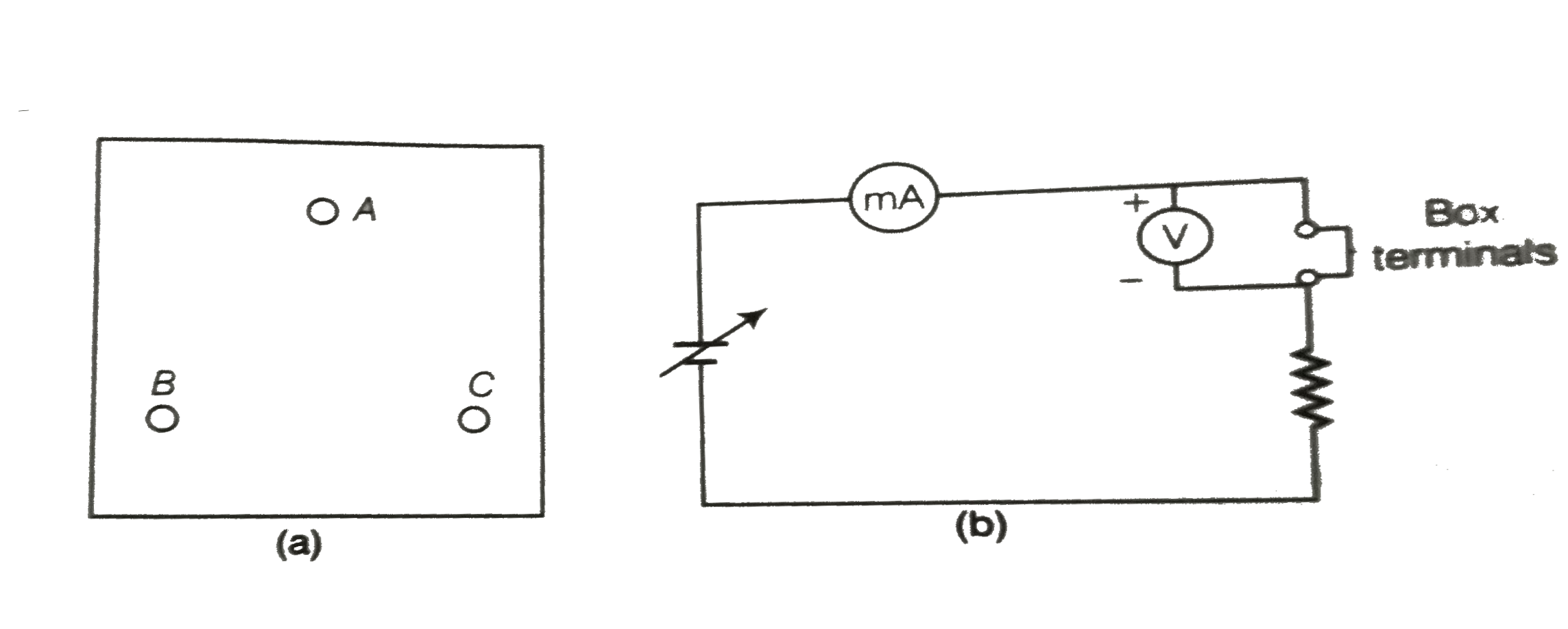The plot between Ecell versus temperature (T in kelvin) has negative slope and positive intercept whe ΔH is _________ (megative/positive) and temperature coefficient is _________ (negative/positive)
To solve the question regarding the relationship between Ecell and temperature (T in Kelvin) with a negative slope and a positive intercept, we can follow these steps:
1. Understand the Graph: We are given that the plot of Ecell versus temperature has a negative slope and a positive intercept. This means that as the temperature increases, the cell potential Ecell decreases.
2. Identify the Equation: The relationship between Ecell and temperature can be expressed using the equation:
Ecell=−ΔHnF+T(dEcelldT)
Here, ΔH is the change in enthalpy, n is the number of moles of electrons transferred, and F is Faraday's constant.
3. Compare with Line Equation: The equation can be compared to the linear equation y=mx+c, where:
- y corresponds to Ecell
- x corresponds to temperature T
- m (the slope) corresponds to dEcelldT
- c (the intercept) corresponds to −ΔHnF
4. Analyze the Intercept: Since the intercept is positive, we have:
−ΔHnF>0
This implies that:
ΔH<0
Therefore, ΔH must be negative.
5. Analyze the Slope: The slope is negative, which means:
dEcelldT<0
This indicates that the temperature coefficient must also be negative.
Conclusion:
- ΔH is negative.
- The temperature coefficient dEcelldT is negative.
Final Answer:
- ΔH is negative and the temperature coefficient is negative.
Ecell=−ΔHnF+T(dEcelldT)
Here, ΔH is the change in enthalpy, n is the number of moles of electrons transferred, and F is Faraday's constant.
- y corresponds to Ecell
- x corresponds to temperature T
- m (the slope) corresponds to dEcelldT
- c (the intercept) corresponds to −ΔHnF
−ΔHnF>0
This implies that:
ΔH<0
Therefore, ΔH must be negative.
dEcelldT<0
This indicates that the temperature coefficient must also be negative.
- ΔH is negative.
- The temperature coefficient dEcelldT is negative.
- ΔH is negative and the temperature coefficient is negative.
Topper's Solved these Questions
- ELECTROCHEMISTRY BOOK - AAKASH INSTITUTE ENGLISHCHAPTER - ELECTROCHEMISTRY EXERCISE - Try Yourself
19 Videos
- ELECTROCHEMISTRY BOOK - AAKASH INSTITUTE ENGLISHCHAPTER - ELECTROCHEMISTRY EXERCISE - Assignment (SECTION A) Objective Type Questions (One option is correct)
43 Videos
- COORDINATION COMPOUNDS BOOK - AAKASH INSTITUTE ENGLISHCHAPTER - COORDINATION COMPOUNDS EXERCISE - Assignment (Section-J Aakash Challenger Questions )
10 Videos
- ENVIRONMENTAL CHEMISTRYBOOK - AAKASH INSTITUTE ENGLISHCHAPTER - ENVIRONMENTAL CHEMISTRYEXERCISE - ASSIGNMENT (SECTION-D) (Assertion - Reason Type Questions)
4 Videos
Similar Questions
Distinguish between :Gram negative bacteria and Gram positive bacteria
View SolutionGive reasons : All temperature is the absolute (Kelvin ) scale are in positive figures.
View SolutionWhich of the following has negative temperature coefficient of resistance?
View SolutionAssertion: the value of temperature coefficient of resistance is positive is for metals.
Reason: The temperature coefficient of resistance for insulator is also positive.
View SolutionDiscuss the effect of temperature on the spontaneity of a process when for the process both ΔHandΔS are positive.
View SolutionPredict the sign of ΔG for the reaction at a very low temperature for which ΔHis+ve and ΔS is positive.
View SolutionWhat would happen to a reversible reaction at equilibrium, when
a. The temperature is raised, given that its ΔH is positive.
b. The temperature is lowered, given that its ΔH is positive.
c. The temperature is lowered, given that its ΔH is negative.
d. The pressure is lowered, given that Δn is negative.
e. The pressure is increased, given Δn is negative.
View SolutionGive important differences between solutions showing positive and negative deviations.
View SolutionA simple pendulum has time period T The bob is given negative charge and surface below it is given positive change new time period will be
View SolutionConsider a box with three terminals on top of it as shown in figure.

Three components namely, two germanium diodes and one resistor are connected across these three terminals in some arrangement
A student performs an experiment in which any two of these three terminals are connected in the circuit shown in figure.
The student obtains graphs of current-voltage characteristics for unknown combination of components between the two terminals connected in the circuit. The graphs are
(i) When A is positive and B is negative

(ii) When A is negative and B is positive

(iii) When B is negative and C is positve

(iv) When B is positive and C is neagtive

(v) When A is positive and C is negative

(vi) When A is negative and C is positive

From these graphs of current − voltage characteristic shown in fig. (c) to (h) determine the arrangement of components between A, B and C.
View Solution
